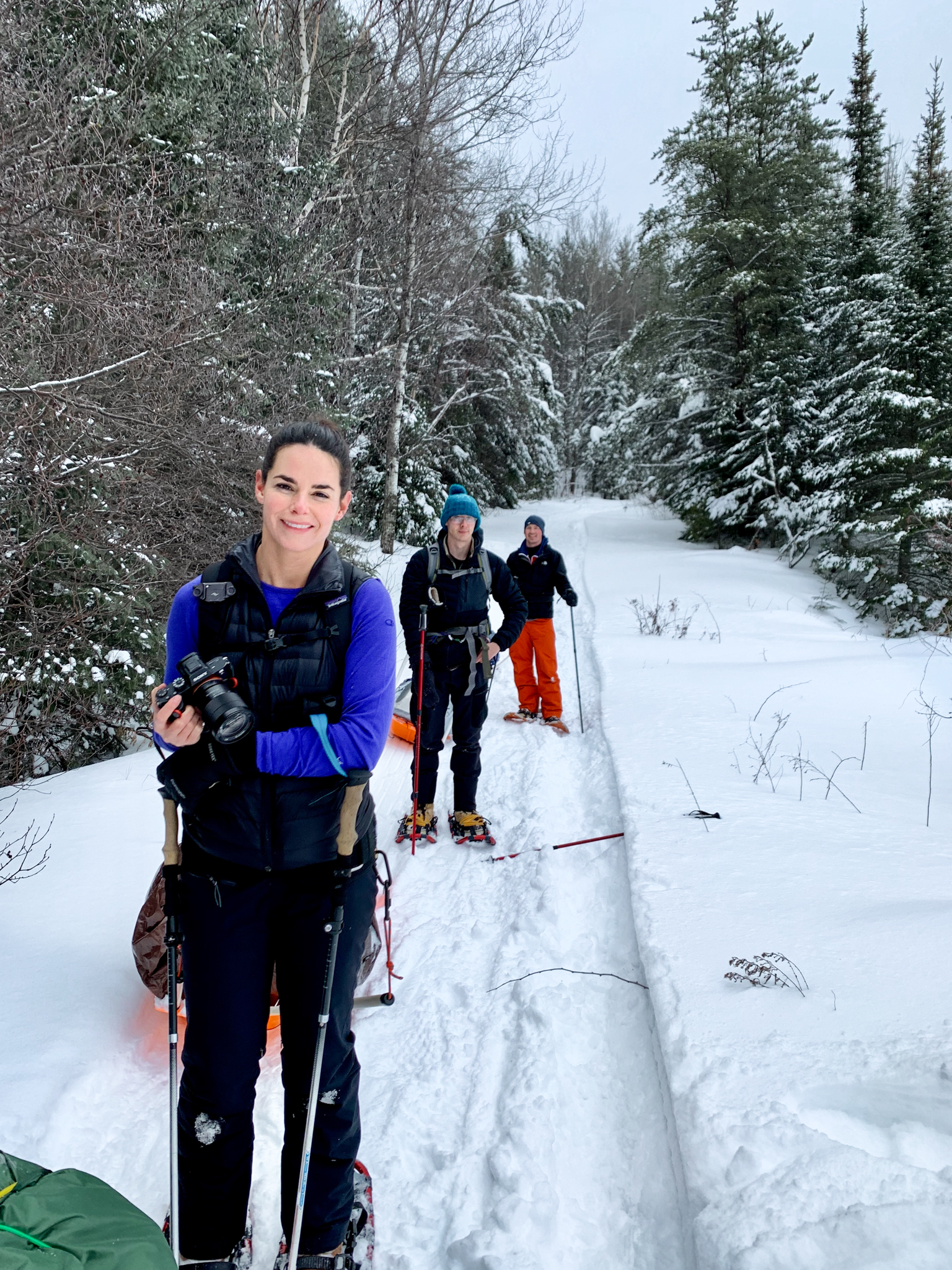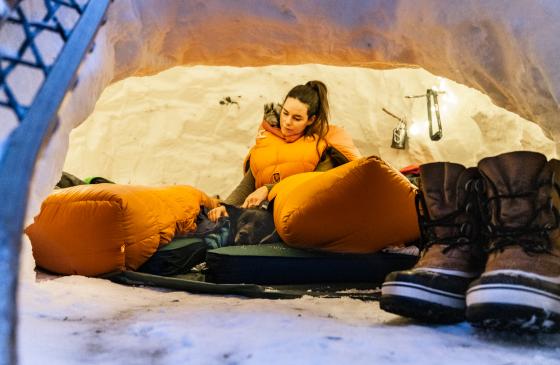Our love of the North started years ago. We stumbled upon this place as most travelers do. As you way down the Gunflint from Grand Marais, It's hard to describe the feeling of the North and its wilderness. I've tried many times to quantify it with words. However, I never feel like I do it justice. When we head North, it feels like coming home. The wilderness is inviting yet mysterious. It's unlike any location we've ever experienced. There is a feeling that seems to encapsulate you when you're here like a warm embrace from an old friend. You know know that there is something special about this place.
After experiencing the BWCA on our first Canoe trip in early October, we knew that we would want to do a winter camping trip. It's something we've been talking about for years. But like anything worthwhile, there is a steep learning curve. One doesn't merely go camping, in the North, in the middle of winter. There are a lot of factors at play here. The weather is the most concerning factor—our propensity for adventure often our ways our fear of the unknown. So we made the leap into planning the little outing.
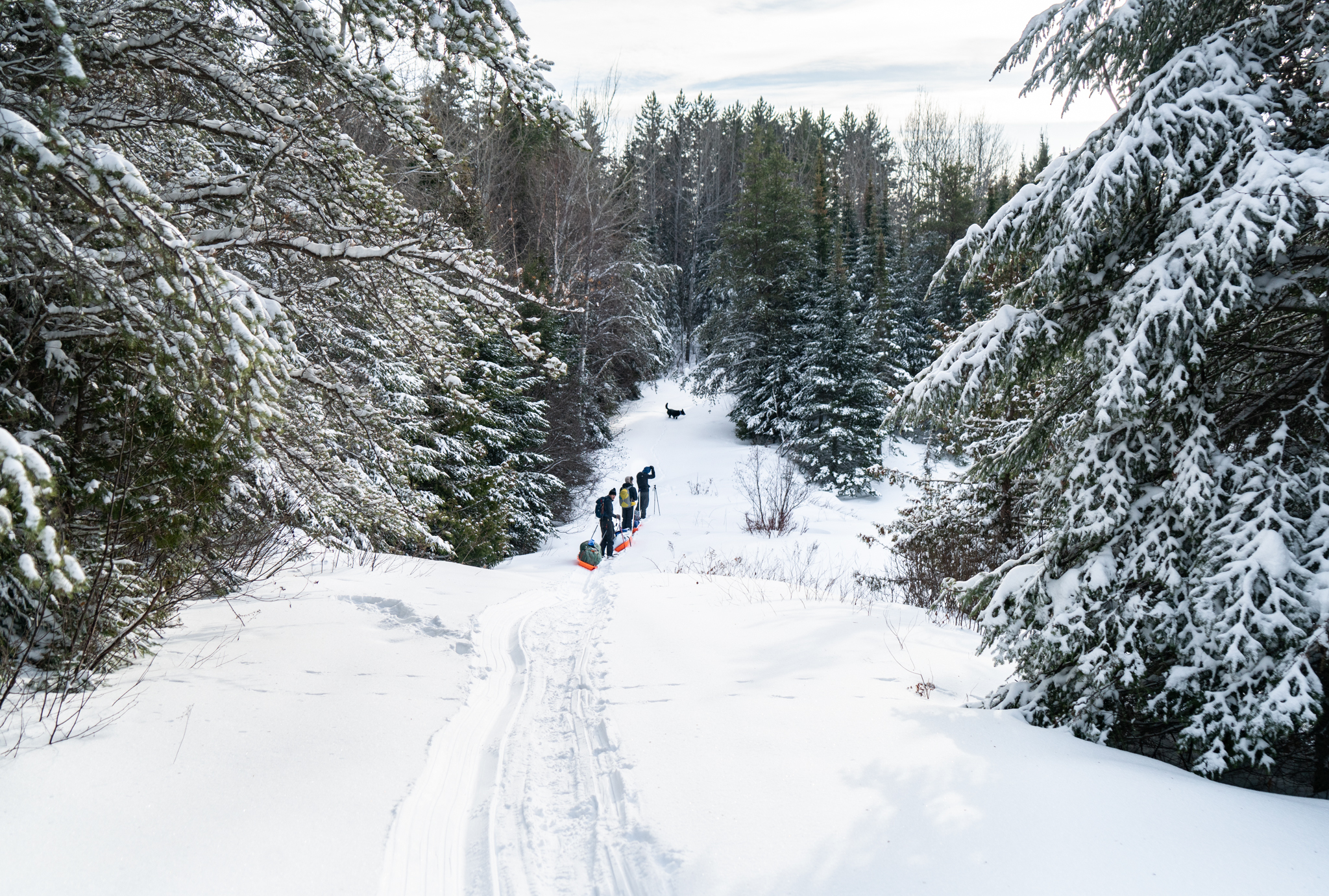
Luckily we had friends who have been doing this kind of winter camping for years. We relied heavily on them for their guidance both during the four days of winter camping the weeks leading up to it.
There are a few factors to consider when you decide that this is something that you'd like to embark on.
- Do you like the cold: It sounds silly — but it's a real question. Cold is going to be the friend that never leaves you.
- Do you have the right gear: Having gear that is rated for bitter cold is incredibly essential. That and knowing how to layer for warmth.
- What will do you do food: Packing enough food is difficult. You burn more calories in the winter. So it's important to bring more than you think you need.
- How will you sleep: To be honest, this was our biggest concern. You're most exposed at night. So having a sleeping system that can support you is crucial.
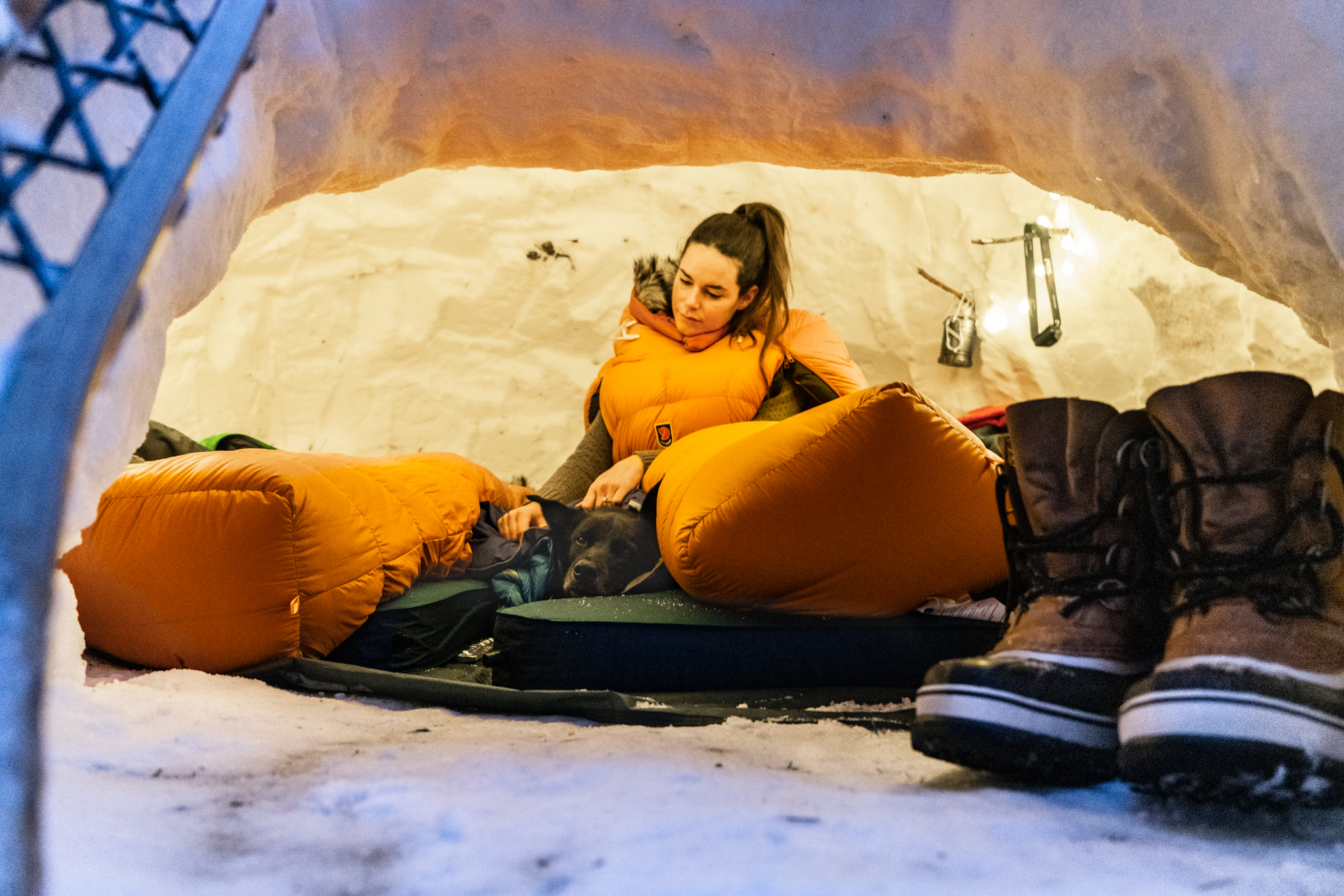
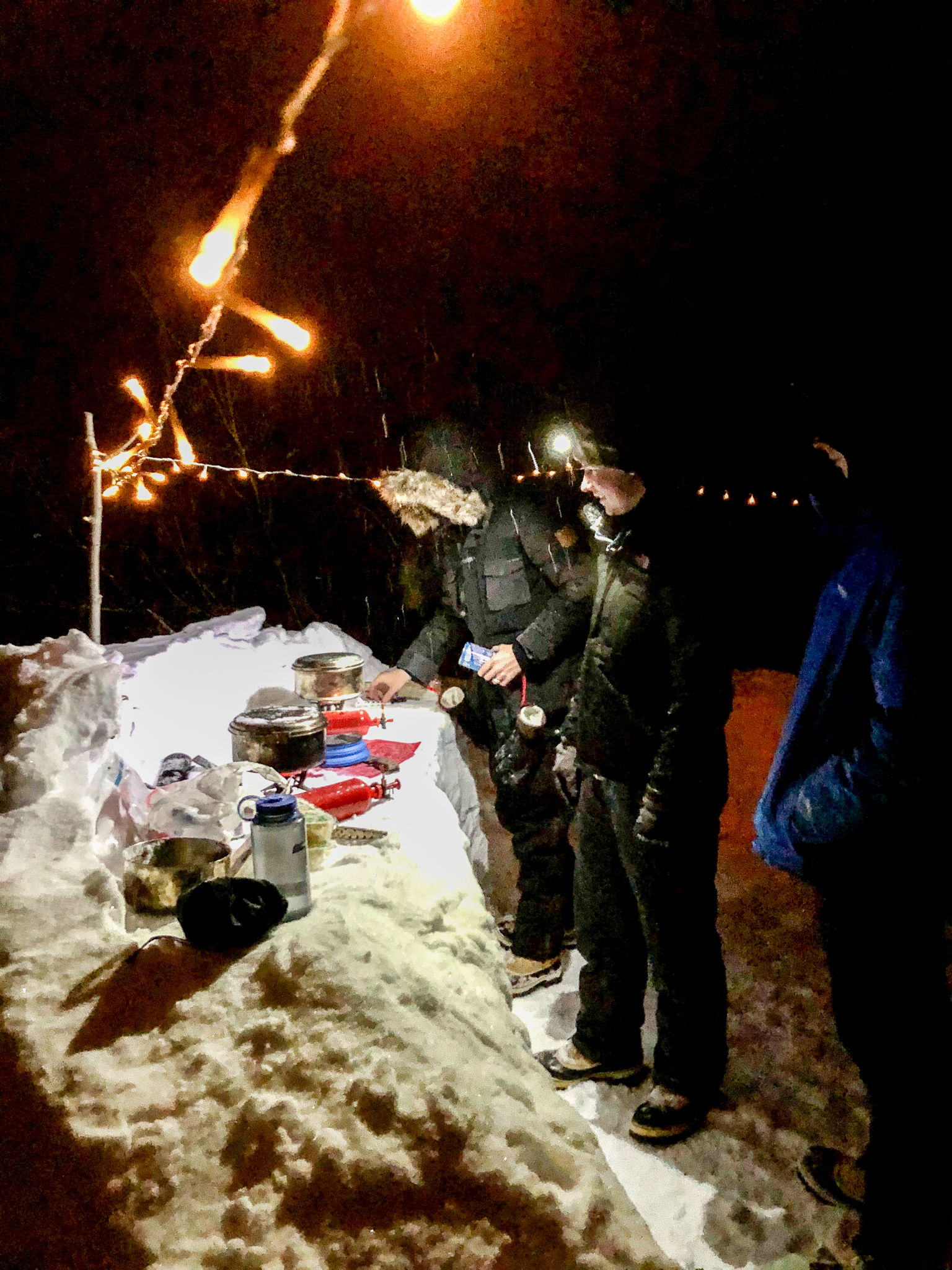
We spent months prepping our gear list. I'm not going to lie — it was a pricy gear list. There are cheaper ways to approach a trip like this. But it's important to note that proper gear costs money and vis versa. So investing in something like this is never a bad thing — especially if it means that you'll be comfortable.
To winter camp is to take joy in pain. You quickly realize that there is something beyond cold— oddly enough, it's comfort. Once you get past the initial shock of being cold, your body adapts, and you begin to get warm again.
Our adventure took us down the Gunflint. Initially, we had planned to launch from Trails End. However, after about a mile of walking, we realized that the lake wasn't completely frozen over, which was incredibly dangerous, given the fact that we had planned to hike across a few lakes. After a quick regroup, we shifted gears and headed back down the trail and launched from Poplar Lake.
Our first evening was nestled in the dense forest. We set up camp and built a modified canopy shelter. We knew the sleeping bags were rated -30. So it wasn't going to be too much of a problem. Setting up camp took much longer than expected. Honestly, everything takes longer when you winter camp. After a few long hours of setting up, we nestled around the fire, listened to tunes, and made a much-deserved dinner. Later that evening, as everyone was fast asleep, I remember opening my eyes and seeing the stars glistening in the nights' sky. It was one of the most beautiful things I have ever seen.
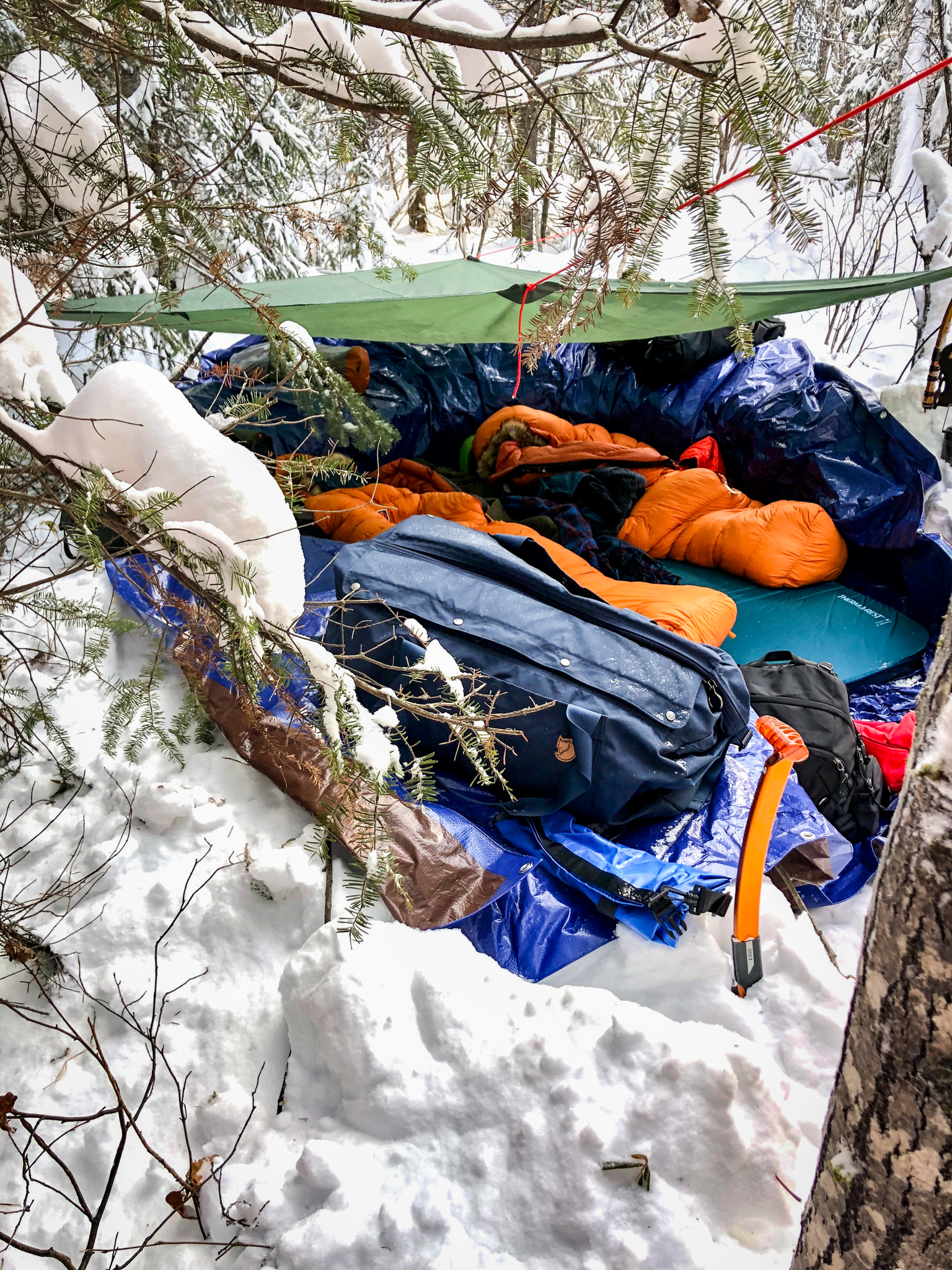
The next morning we packed up our gear and headed further in. It was our goal to set a camp for two nights. That way, we could get settled in and make a more comfortable site. But first, we had to pile snow for a Quinzee. For those not familiar — this is when you build a shelter out of a pile of snow. It's an oversimplification of what it is, but just imagine the snow forts you made as a kid. That exactly what this is. However, building a Quinzee takes time. To be safe, you should let the snow set for 24 hours. That way, it gets compacted enough to hollow out. The process of piling snow takes hours. So many hours-- mainly because it needs to be tall and wide enough to fit two grown people and their dog.
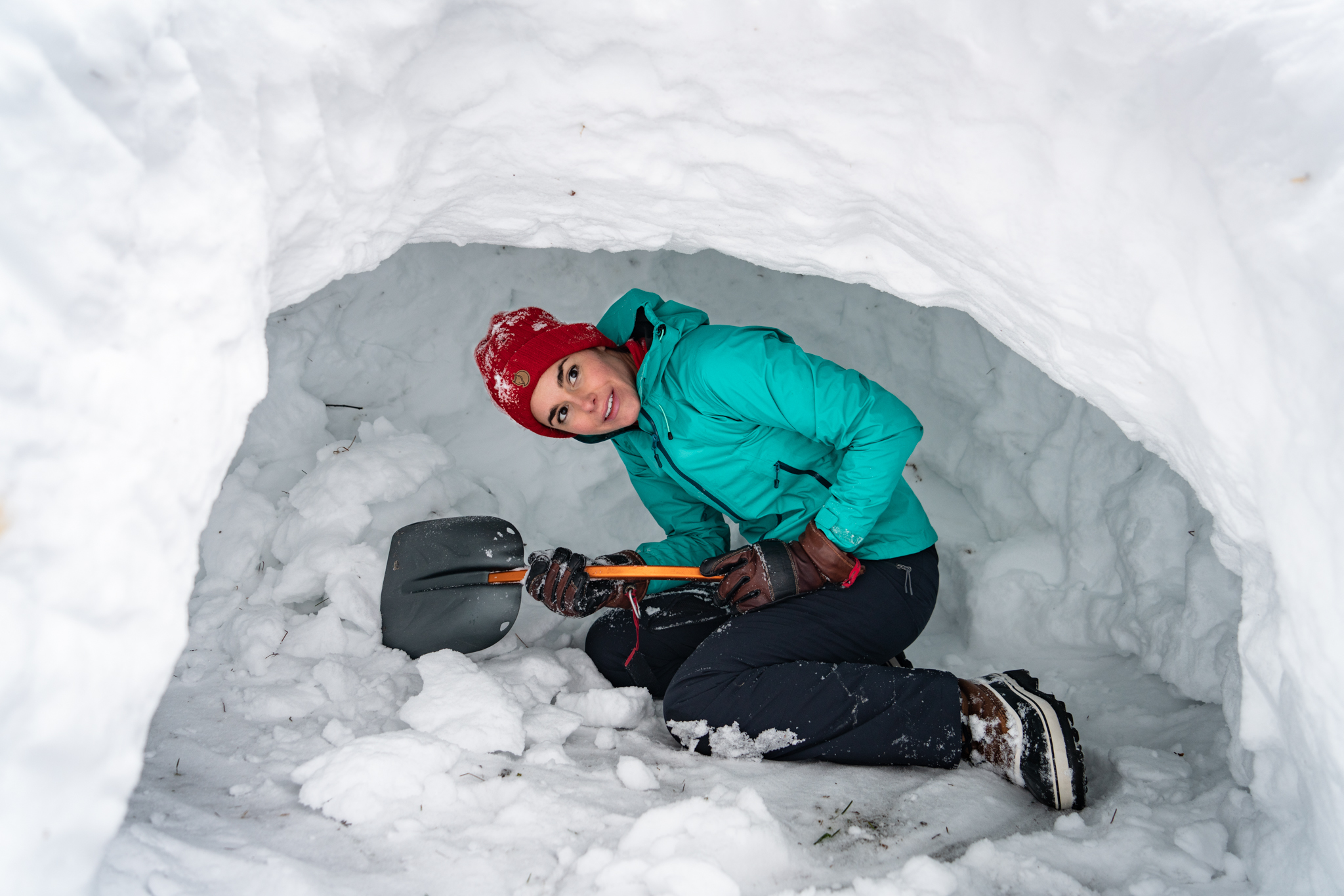
Did I mention we had our dog with us? Snow camping with your dog is more complicated than it sounds. There isn't a lot of info out there regarding how to prepare your dog for extended hours/days in the cold. It took months of researching before we were comfortable bringing her with. But there are some essential things to note when camping with your dog.
1. Does your dog have a double coat?: Dogs with double coats have a natural insulator to the cold. This provides them with the ability to be in the cold longer and at lower temps than other dogs who only have a single coat. An easy way to test this is to pull the top (guard hair) aside -- if there is an under layer of fur that's slightly different than the top layer— than your dog is better suited for snow.
2. Temp charts: There are charts available that talk about the correlation between temp and how comfortable your dog will be; this varies based on the above factor as well as windchill and cold tolerance. I think the best test is taking your dog out on snowy days. If your dog is happy and comfortable on chilly days (10 or below), they will likely be fine down to zero or below zero.
3. Moving: Your dog will be great while moving (or during the day). Dogs (like humans) generate heat through movement. Furthermore, they don't sweat like we do-- they tend to hold their heat better than us. So during the day, movement is best for them. It's the sitting still that will bother your dog.
4. Layers: There is dog clothing available, and for some, I'm sure it's helpful. But I've found that a majority of clothing for dogs is almost useless. They're better off being free furry if they have a good coat that is adapted to the cold. That being said, If your dog is a short-haired breed, then it would be helpful to equip them with gear.
5. Shoes: Dog shoes are not as good as you think. I've tried them (multiple times), and Athena has never gotten the hang of them. I think we (as humans) tend to overcorrect things with technology (when it isn't needed). That's the problem with dog shoes. Most dogs are perfectly equipped for the outdoors. That being said, I have found that Mushers Secret is a great alternative. It's a wax-like material that goes on your dog's paws and protects them from salt, ice, and snow buildup.
6. Sleeping/ Relaxing: Here is where you need to watch your dog. But this is also the most natural part if you're familiar with sleeping in the cold. A lot of heat is lost through the ground. If you don't have proper insulation between the ground and your sleeping bag, you run the risk of losing that heat. The same goes for dogs. We literally had a pad for Athena to sit on at all times. Sure, hanging out on the snow for a little bit is okay. But hours lying around can really make things uncomfortable for your dog. I found that it's a good idea to have a ground pad (much like a human sleeping pad), blanket (wool), sleeping bag, and an additional sleeping blanket. Layering up is critical. The first night that we were out there, it was -0, and Athena started to shake a bit. So we took out our heavy down jackets and wrapped her up in them. After about 10 mins, she was fine and ended up sleeping outside of her blankets. The thing to remember is that you need to have multiple systems in place to make your dog comfortable.
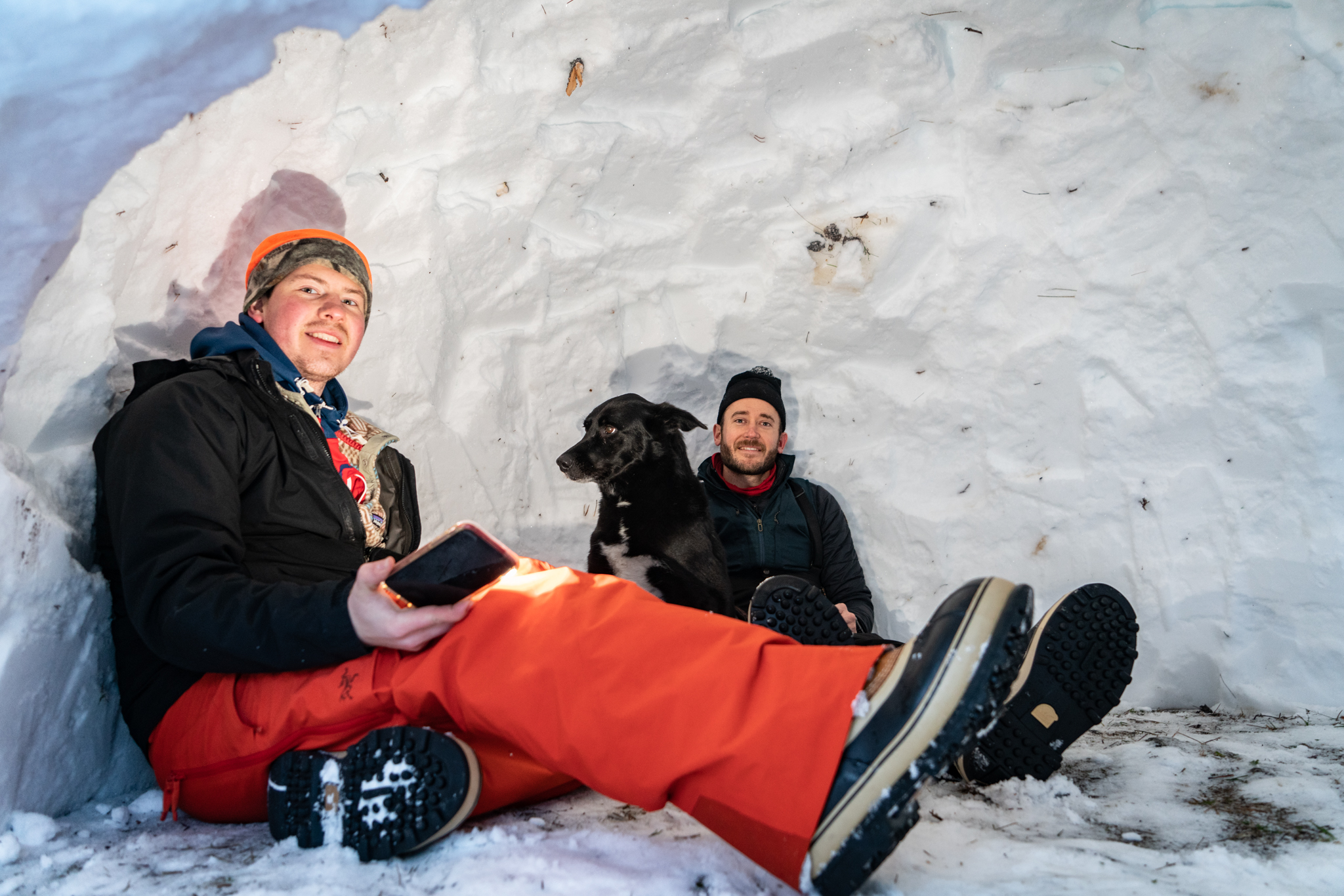
After completing the snow pile, we set up camp for the evening. The temp managed to raise but (around 10), so it was pretty comfortable. The best thing about winter camping is the evening time. There's something amazing about sitting around a fire, drinking, eating, and laughing. When you're out there in the cold of winter, you realize that friendship and laughter go a long way.
The next morning we awoke to snow falling. In a rush to set up camp, we put up our three seasons tent the night before. Luckily it could handle the snowfall. As I said earlier, when you winter camp, everything is more complicated—especially things like keeping drinking water from freezing.--which is a constant battle. After making breakfast, we went out on a day hike, which took us an hour west. The snow was so deep that even with snowshoes, we were sinking 6-12 inches. But the beauty of fresh powder on trees and trail is unparalleled.
After a day of hiking, it was finally time to dig out our Quinzee. Seeing this shelter take shape brought back the joy of being a kid again. Knowing that we were going to be able to sleep in this seemed like it was too good to be true. We managed to complete this process in a few hours -- just in time for dinner. Because this was our last night, we cooked a feast and celebrated the shelter building accomplishment. The campsite was filled with laughter, lights, and music.
Once the time for bed, we crawled into our little snow hut and fell fast to sleep. Sleeping in a shelter like this is actually pretty warm. Tropically it's 20 degrees warmer than it is outside. We didn't believe this until we actually experienced the warmth. Honestly, it was almost hot. But it was so quit— its pretty amazing.
After making our way back to Grand Marais (and even reflecting back on it now), it's hard to imagine that it actually happened. Being in the North and experiencing it in the winter is a wonderful thing. We recommend it to anyone who is wanting to try something a little different, and sometimes a little more complicated.
